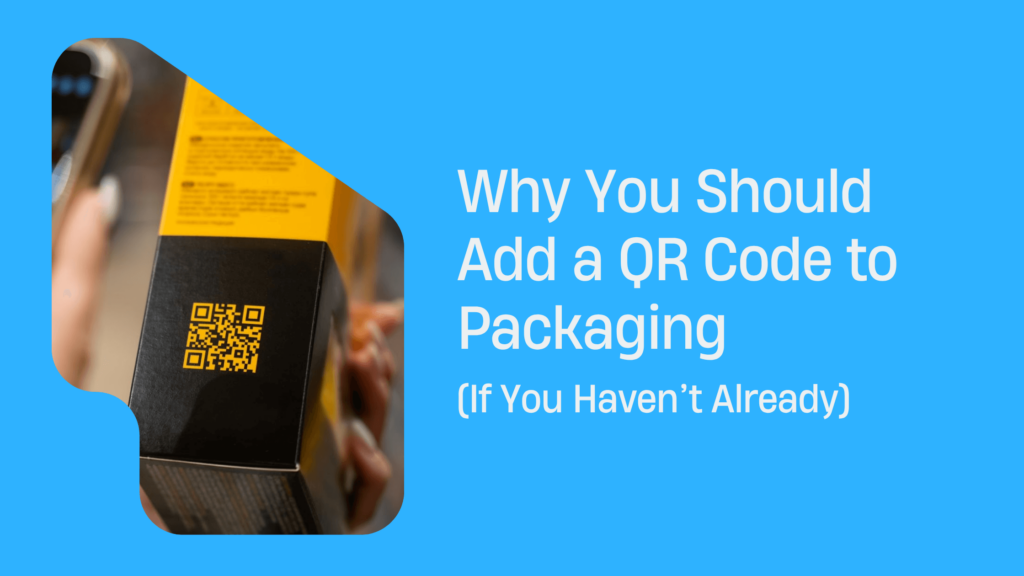Why Your Conversion Rate is Low & How to Fix it Fast?
Your conversion rate measures how many visitors take action, like making a purchase or signing up. A low ecommerce conversion rate means missed sales and lost revenue. Poor website speed, weak CTAs, or a complicated checkout can hurt conversions.
This blog will break down common issues and share conversion rate optimization tips to fix them quickly. Whether it’s improving site design, refining CTAs, or streamlining checkout, these strategies will help you turn more visitors into paying customers.
What is Conversion Rate & Why Does it Matter?
Conversion rate is the percentage of visitors who take action on a website. In ecommerce, this usually means making a purchase but can also include signing up, adding items to a cart, or filling out a form.
A high conversion rate means your site is doing a great job of turning visitors into customers. A low rate means something isn’t working. It could be the design, messaging, or checkout process.
How Conversion Rate Optimization Helps Businesses Grow
Conversion rate optimization (CRO) helps increase the number of visitors who take action on a website. Small changes can increase revenue. Optimizing product pages, checkout, and CTAs makes buying simpler.
CRO helps businesses get more from existing traffic, cutting the need for costly marketing. Instead of just attracting more visitors, it focuses on converting the ones already there.
Industry Benchmarks for a Good Ecommerce Conversion Rate
Average Ecommerce Conversion Rate – Typically ranges between 2.5 percent and 3 percent across most industries.
High-Performing Stores – Well-optimized ecommerce stores can achieve 5 percent or higher conversion rates.
By Industry:
- Fashion & Apparel – 1.5 percent – 3 percent
- Electronics – 1 percent – 2 percent
- Health & Beauty – 2 percent – 4 percent
- Home & Furniture – 0.5 percent – 2 percent
Mobile vs Desktop:
- Desktop conversion rates are generally higher than mobile, with an average of 3 percent – 4 percent, while mobile sits around 1.5 percent – 2 percent.
Impact of CRO:
- Simple tweaks like improving page load speed or optimizing product descriptions can lead to a 10-30 percent increase in conversions.
- Businesses that invest in CRO often see long-term improvements in revenue and customer retention.
What are the Common Reasons for Low Conversion Rates?
Slow Website Speed
A slow website hurts your conversion rate because visitors lose patience and leave. If a page loads too slowly, customers might leave before seeing your products. Speed is a key part of conversion rate optimization since a fast site keeps users engaged and increases sales.
How Page Load Time Affects Conversions
- A one-second delay can lower the ecommerce conversion rate by up to 7 percent.
- Slow pages lead to higher bounce rates and fewer completed purchases.
- Google ranks faster websites higher, bringing in more organic traffic.
Tools to Check and Improve Speed
- Google PageSpeed Insights – Analyzes speed and suggests fixes.
- GTmetrix – Provides detailed performance reports.
- Pingdom – Tests load times from different locations.
- Cloudflare – Speeds up sites with caching and CDN services.
Poor User Experience (UX) & Navigation
A confusing or frustrating website can push visitors away, hurting your conversion rate. A smooth, mobile-friendly experience keeps users engaged and leads to more sales. Here’s how to improve your ecommerce conversion rate with better UX and navigation.
Why a Mobile-Friendly, Easy-to-Use Website Matters
- More than half of online traffic is from mobile users. If your site isn’t mobile-friendly, they’ll leave.
- A cluttered layout or slow-loading pages frustrate visitors, lowering conversions.
- Easy navigation helps users find products faster, reducing drop-offs.
Tips to Improve Website Design for More Conversions
- Make it mobile-responsive – Ensure your site adjusts to different screen sizes.
- Simplify navigation – Use clear menus and search bars for easy browsing.
- Speed up loading times – Compress images, use caching, and remove unnecessary scripts.
- Use clear CTAs – Guide users to take action with bold, direct buttons.
- Improve readability – Use simple fonts, proper spacing, and high-contrast colors.
A smooth UX improves the shopping experience and boosts conversions.
Weak or Confusing Calls to Action (CTAs)
How Unclear CTAs Hurt Conversions
- If your CTA is vague or unappealing, visitors won’t take action.
- Generic phrases like “Click Here” don’t tell users what to expect.
- A weak CTA can create hesitation, reducing your ecommerce conversion rate.
- Poor placement or hard-to-find CTAs can lead to lost opportunities.
Tips for Writing Compelling and Action-Driven CTAs
- Use clear, direct language that tells users what to do. Example – “Get 20 percent Off Now” instead of “Learn More.”
- Create urgency with words like “Limited Time” or “Only a Few Left.”
- Make CTAs stand out with contrasting colors and bold fonts.
- Keep it short—4-6 words work best.
- Place CTAs where users naturally engage, like near product descriptions or checkout pages.
- Test different CTA styles to see what improves conversion rate optimization.
Complicated Checkout Process
A long and confusing checkout process is one of the biggest reasons for a low ecommerce conversion rate. If customers face too many steps, they may abandon their cart out of frustration. Every extra click increases the chance of losing a sale.
How to Streamline Checkout for Faster Conversions
- Reduce the number of steps – Keep checkout quick and simple. Ask for only essential details.
- Enable guest checkout – Don’t force account creation. Let users buy without signing up.
- Auto-fill customer details – Use saved addresses and payment info for returning shoppers.
- Offer multiple payment options – Accept credit cards, PayPal, and digital wallets.
- Show a progress bar – Let users know how close they are to completing the purchase.
- Optimize for mobile – Ensure the checkout process is smooth on all devices.
A smooth checkout improves conversion rates and prevents cart abandonment.
Lack of Trust Signals
Without trust signals, visitors may hesitate to buy, lowering your conversion rate. A site that doesn’t look credible can push potential customers away. Here’s how to build trust and boost conversion rate optimization:
Importance of Trust Signals
- Customer Reviews – Positive reviews and ratings increase confidence in your product.
- Security Badges – Displaying SSL certificates and payment security badges reassures customers.
- Money-Back Guarantees – Offering refunds or satisfaction guarantees reduces risk for buyers.
How to Build Credibility
- Use real testimonials and verified buyer reviews.
- Show logos of secure payment gateways and trusted partners.
- Be transparent about policies, shipping, and returns.
- Keep branding consistent and professional for a trustworthy experience.
Not Targeting the Right Audience
Why Knowing Your Audience is Key to Conversions
- Selling to the wrong audience leads to low engagement and poor conversions.
- Understanding customer needs helps create relevant offers and messages.
- A well-targeted audience is more likely to complete a purchase.
How to Refine Targeting for Better Results
- Use Data & Analytics – Track user behavior to understand what works.
- Segment Your Audience – Group customers based on interests, demographics, and buying patterns.
- Optimize Ad Targeting – Use precise filters in paid ads to reach the right people.
- Personalize Content – Tailor product recommendations, emails, and website experiences.
- Test & Adjust – Run A/B tests on messaging, offers, and landing pages to see what resonates best.
Unoptimized Product Pages
An unoptimized product page can hurt your conversion rate. If customers can’t find clear details or appealing visuals, they’ll likely leave without buying. Here’s how to fix it:
High-Quality Images & Descriptions
- Use clear, high-resolution images from multiple angles.
- Include zoom-in features and lifestyle shots.
- Write detailed, benefit-driven product descriptions.
- Highlight key features, materials, and dimensions.
- Ensure pricing is transparent, with no hidden fees.
SEO for Better Product Visibility
- Use relevant keywords naturally in titles and descriptions.
- Optimize image alt text for search engines.
- Write unique meta descriptions for each product.
- Improve page speed to enhance user experience.
- Add structured data to help search engines understand your product details.
Limited Payment & Shipping Options
Why Offering Multiple Payment Methods Boosts Conversions
- Customers like different payment methods. Some use credit cards, while others prefer PayPal, Apple Pay, or Buy Now, Pay Later.
- Limited choices can lead to cart abandonment, lowering your ecommerce conversion rate.
- Adding more payment options improves customer convenience and increases trust.
The Importance of Transparent Shipping and Return Policies
- Hidden shipping fees or vague delivery times can make customers abandon their carts.
- Displaying shipping costs upfront improves conversion rate optimization.
- A simple return policy gives buyers confidence and encourages them to buy.
- Providing tracking options enhances customer satisfaction and builds trust.
How to Fix Your Conversion Rate Fast?
If your conversion rate is low, don’t worry—there are quick fixes that can help. Here’s how you can optimize your ecommerce conversion rate fast:
Improve Site Speed and Mobile Responsiveness
A slow website can drive visitors away before they even browse. Use tools like Google PageSpeed Insights to check your load time. Compress images, enable caching, and minimize redirects to speed things up. Also, ensure your site is mobile-friendly. A responsive design makes shopping easier on any device, which improves conversions.
Optimize CTA Placement and Messaging
Your call to action (CTA) should be clear, compelling, and easy to find. Use action-oriented words like “Buy Now,” “Get Started,” or “Claim Your Discount.” Test different colors, sizes, and placements to see what works best. CTAs should stand out but not feel pushy.
Simplify the Checkout Process
A complicated checkout process increases cart abandonment. Keep it simple—reduce form fields, allow guest checkout, and offer multiple payment options. Show a progress bar so users know how many steps are left. The smoother the process, the higher your conversion rate.
Build Trust with Reviews and Security Features
People hesitate to buy from sites they don’t trust. Display customer reviews, testimonials, and trust badges (like SSL certificates and secure payment logos). Offer clear return policies and money-back guarantees. Transparency reassures customers and improves conversions.
Personalize User Experience with AI and Analytics
Personalization makes shopping more relevant. Use AI to recommend products based on browsing history. Show dynamic pricing, personalized emails, and targeted promotions. The more tailored the experience, the more likely visitors are to convert.
Run A/B Tests on Landing Pages and Product Pages
Small tweaks can make a big impact. Test different headlines, images, button colors, and layouts. Use A/B testing tools to see what drives the most conversions. Data-driven changes lead to better results.
Use Retargeting Strategies to Recover Abandoned Carts
Not every visitor buys on their first visit. Use retargeting ads to remind them about their cart. Send personalized emails with discounts or free shipping offers. A well-timed follow-up can turn an abandoned cart into a sale.
Final Thoughts
A low conversion rate can hurt your business, but the right fixes can turn things around. Focus on improving website speed, simplifying checkout, and refining your conversion rate optimization strategies.
Keep testing different elements to see what works best. Small tweaks can lead to big improvements. Prioritize user experience and trust to boost your ecommerce conversion rate over time. Stay consistent, analyze results, and keep optimizing for long-term success.


